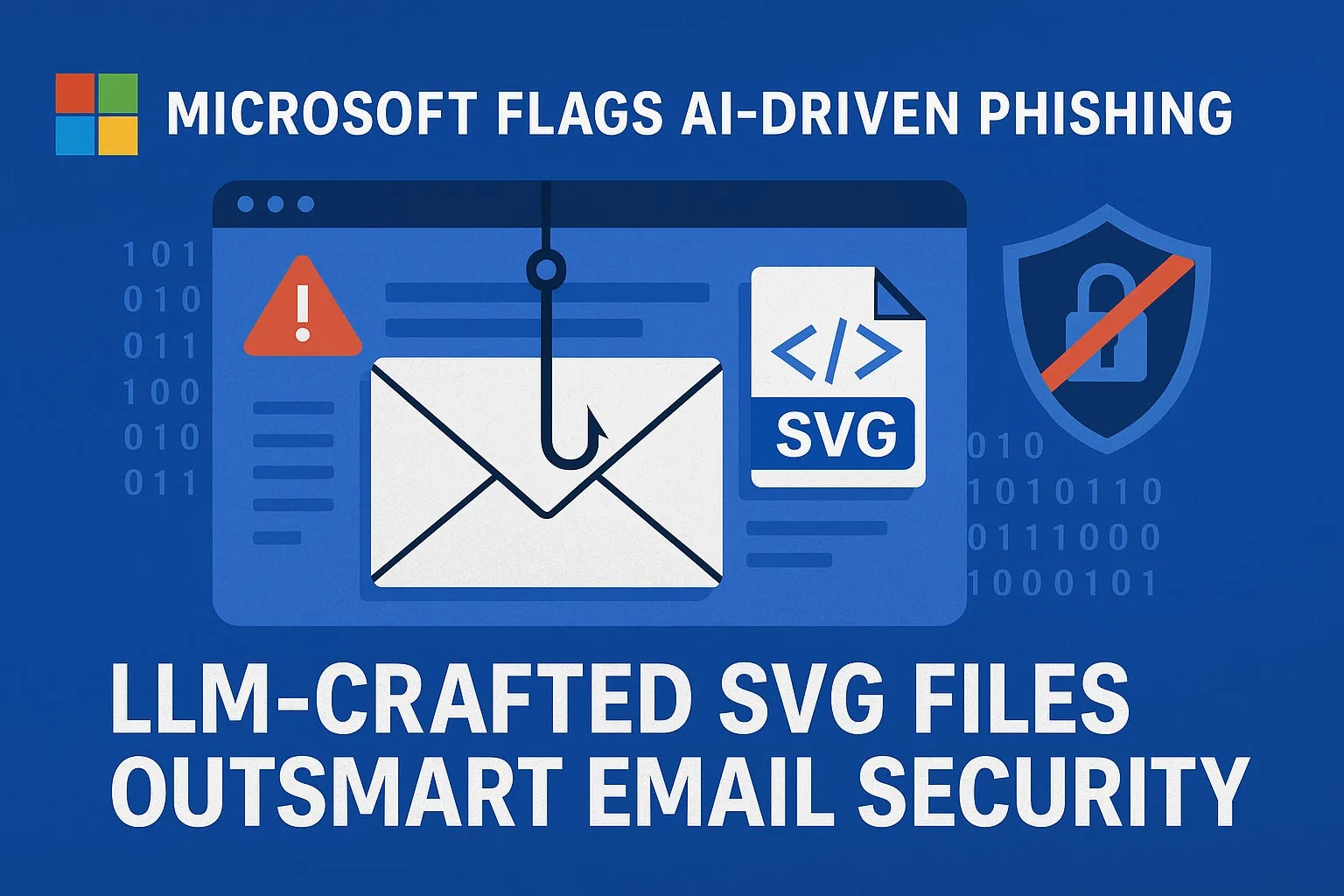

Microsoft has issued a phishing warning about a new AI-driven phishing campaign that uses SVG files to bypass email security.
Phishing is not new, but cybercriminals are upgrading their playbook with artificial intelligence (AI). Microsoft recently flagged a campaign where hackers used large language models (LLMs) to create malicious SVG files that bypass common email security filters.
This is a turning point for everyday users and businesses alike: phishing emails are becoming smarter, harder to detect, and far more convincing. Let’s break down what’s happening, what it means for you, and how to stay protected.
Microsoft Flags AI-Driven Phishing: How LLM-Crafted SVG Files Outsmart Email Security - Table of ContentsWhat Is AI-Driven Phishing?
Why SVG Files Are Dangerous in This Attack
How the Attack Works
Why This Matters for Everyday Users
How to Protect Yourself and Your Business1. Slow Down Before Clicking
2. Inspect Attachments
3. Use Multi-Factor Authentication (MFA)
4. Keep Email Security Updated
5. Train Your Team Regularly
What This Means for Small Businesses
Final Thoughts
Frequently Asked QuestionsWhat makes AI-driven phishing different from regular phishing?
Why are SVG files being used in phishing attacks?
How can small businesses defend against AI phishing?
Can personal email users also be targeted?
What should I do if I clicked on a suspicious file?
What Is AI-Driven Phishing?
Traditional phishing relies on sloppy grammar, strange email addresses, and fake login pages. AI is changing the game. By using LLMs like ChatGPT-style tools, attackers can:
- Write perfectly crafted emails that look professional
- Obfuscate malicious code so it slips past spam filters
- Mimic the structure of legitimate business files
In this case, attackers used SVG files (Scalable Vector Graphics), which can hold hidden scripts. To a user, the email looked like a file-sharing notification with a PDF attachment. In reality, it was a malicious SVG file leading to a fake login page designed to steal credentials.
Why SVG Files Are Dangerous in This Attack
SVG files are commonly used for logos and graphics, but they are also text-based and scriptable. That means hackers can:
- Embed hidden JavaScript code
- Delay when malicious code runs
- Disguise the payload using business-friendly terms like revenue, growth, or operations
Microsoft found that these phishing files were structured to look like business dashboards, tricking both humans and automated security tools.
How the Attack Works
- Compromised business email: Hackers send AI-driven phishing emails from real (already hacked) business accounts.
- Self-address trick: Emails appear to be sent to yourself, with real victims hidden in the BCC field.
- Malicious SVG attachment: The file pretends to be a document but hides obfuscated code.
- Fake verification: Victims are redirected to a CAPTCHA page, then to a fake login portal.
- Credential theft: Hackers harvest usernames and passwords.
Why This Matters for Everyday Users
You might think only big corporations are at risk, but phishing works because it targets people, not just systems. Whether you are a small business owner, a medical office, or someone checking personal email at home, you could be tricked.
Here is why this new wave is more dangerous:
- Emails look real: No typos, better design, and legitimate-sounding language.
- Bypasses filters: AI-generated obfuscation slips past standard spam defenses.
- Targets trust: Messages often impersonate services you already use, such as file sharing, HR portals, or banks.
How to Protect Yourself and Your Business
1. Slow Down Before Clicking
If an email feels urgent such as “reset your password” or “review this document,” pause before taking action. Phishing thrives on pressure.
2. Inspect Attachments
SVG, .zip, or other unexpected file types should raise red flags. When in doubt, confirm with the sender through another channel.
3. Use Multi-Factor Authentication (MFA)
Even if credentials are stolen, MFA makes it harder for hackers to break in.
4. Keep Email Security Updated
Ensure your business uses advanced filtering tools that scan attachments for hidden code.
5. Train Your Team Regularly
The best defense is awareness. Employees should know how to recognize modern phishing attempts.
What This Means for Small Businesses
Organizations of all sizes face advanced phishing attacks, from business email compromise (BEC) scams to AI phishing campaigns designed to steal credentials.
By investing in:
- Managed IT security services
- Regular phishing simulations
- Modern spam filters and endpoint protection
…businesses can close the gap without needing a Fortune 500 security budget.
Final Thoughts
AI-driven phishing is here, and it is only going to get more sophisticated. Microsoft’s warning is a reminder that email is still the number one attack vector.
For everyday users: stay alert, double-check files, and use MFA.For businesses: adopt layered security and train your people. It is the most cost-effective way to stay safe.
Cybercriminals are evolving their tactics with AI. The question is: are you evolving your defenses?
📞 Call us at 904.658.0777🔒 Book Your meeting with Zevonix »
Frequently Asked Questions
What makes AI-driven phishing different from regular phishing?AI phishing uses large language models to create flawless emails, obfuscate malicious code, and mimic legitimate business processes, making detection much harder.Why are SVG files being used in phishing attacks?Because SVGs are text-based and scriptable, attackers can hide malicious scripts inside them while making them appear like harmless graphics.Can personal email users also be targeted?Yes. Many campaigns target individuals with fake password resets, bank alerts, or social security messages.What should I do if I clicked on a suspicious file?Immediately disconnect from the internet, change your passwords, and contact IT or security support to investigate further. https://zevonix.com/microsoft-flags-ai-driven-phishing-how-llm-crafted-svg-files-outsmart-email-security/
Comments
Post a Comment